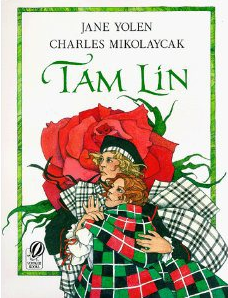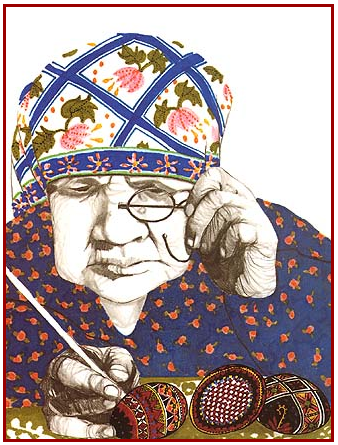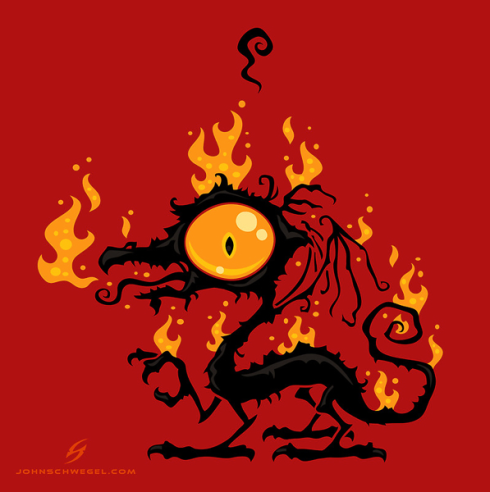Recently, my two-year old niece, Anna, has been transfixed by one certain book, Who is the Beast? by Keith Baker. Almost everyday, she runs up to my sister with the book in hand demanding, “beast, beast.” Once she sits down, she immediately starts pointing out all the hidden, snail illustrations on each page. Although I wonder how much of the story she actually comprehends, it is funny seeing Anna so mesmerized by one book.

**Who is the Beast? written and illustrated by Keith Baker. Synopsis: A friendly tiger is confused by jungle animals fleeing from a beast, until he discovers he is the beast…he returns to them and points out their similarities. (Image and synopsis courtesy of barnesandnoble.com)**
Before Anna, I didn’t give much thought to children’s books. However, she has opened my eyes to a real exciting art form.
Generally speaking, children’s books are quite short. Yet those words hold the potential for a much broader story and meaning. For me personally, how well the illustration conveys the meaning is the most important thing. No matter how good the story is, if the illustration falls short, it most likely will not be counted among my favorites.
So what do I consider good illustration? I love compositions that add another level that aren’t necessarily obvious in the words. I especially love when this is done through the additional of a small detail. More often than not, I find that these details make the story more rounded and possibly more relevant to the adults who have to read them over and over. On top of that — and you might think that this goes without saying — I love illustrations that are good compositions. I enjoy dynamic lines, bold textures, and interesting use of white space. Of course, these don’t necessarily have to be present to constitute a good composition. These are just the elements that draw me toward a particular book.
Since rediscovering my love for illustrations, I have been rereading some of my favorite books and studying them. I have also found a book, quite by accident, at the library celebrating the greatest children’s book illustrators during the 20th century. Edited by Julie Cummins, this book is titled Children’s Book Illustration and Design. I would suggest anyone interested to check it out.
* * *
Now, I will present some of my personal favorites or books I think I would like based off the illustration. If I haven’t read them, they were taken from the book mentioned above. (The ** indicates I have read the book personally)

Animalia, written and illustrated by Graeme Base. Synopsis: An alphabet book with fantastic and detailed pictures. Other works from Graeme Base include The Eleventh Hour. (Image and synopsis courtesy of barnesandnoble.com)
The concept behind Animalia is as simple as they come; it is an alphabet book. Yet the author and illustrator, Grame Base, includes so much detail, that I bet the reader finds something new at each reading. Further, I like that the whole book is alliterative. The spread shown above reads, “Lazy lions lounging in the local library.”

**The Mitten, written and illustrated by Jan Brett. Synopsis: When Nicki drops his white mitten in the snow, he goes on without realizing that it is missing. One by one, woodland animals find it and crawl in…until the bear sneezes. (Image and synopsis courtesy of barnesandnoble.com)**
I discovered The Mitten from my former roommate. She was an elementary education major, and as a result, often brought back children’s books to study. Naturally, I took breaks from my homework to peruse a few of them.
I immediately fell in love with this story (see above for synopsis). However, it was the addition of a side panel that sealed it as a favorite. After Nicki realizes he lost his mitten, he begins doing what anyone would; he starts searching for it. Within the side panel, the reader sees his story unfold, despite the fact that the main plot is centered around the woodland animals.

Tam Lin, written by Jane Yolen and illustrated by Charles Mikolaycak. Synopsis: A young girl triumphs over the Queen of Faeries to reclaim her ancestral home and free her true love in this haunting retelling of an old Scottish ballad. Other books illustrated by Charles Mikolaycak include his self-authored work, Babushka. (Image and synopsis courtesy of barnesandnoble.com)
This has a lot of elements that could make it a favorite in the future. For starters, the subject matter is based off a Scottish tale. Although I don’t know many Scottish stories, it is a part of my heritage. This fact alone makes it intriguing to me. However, Charles Mikolaycak’s dynamic style sealed it. He constantly employs the rule of thirds and breaks a self-made border. These paired together creates a sense of heightened drama. Along with this, he had to draw a lot of plaid. Knowing how fabric falls is hard enough without adding a pattern. Mikolaycak did it in a way that is believable.

Rechenka’s Eggs, written and illustrated by Patricia Polacco. Synopsis: Babushka, known for her exquisite hand-painted eggs, finds Rechenka, a wounded goose, and takes her home. When she’s ready to try her wings again, Rechenka accidentally breaks all of Babushka’s lovingly crafted eggs. But the next morning Babushka awakens to a miraculous surprise. (Image courtesy of patriciapolacco.com and synopsis from barnesandnoble.com)
The contrast and patterns drew me to Rechenka’s Eggs. Patricia Polacco’s choice of making the whole composition seem relatively flat, yet add depth in the face and hands is quite interesting. She could have stopped there; but by striping Babushka of the bold, colorful patterns of everything else; she made the contrast more apparent. I look forward to seeing how Polacco’s style plays out in the rest of the book, instead of just in the detail seen above.

**My Friend Rabbit, written and illustrated by Eric Rohmann. Synopsis: When Mouse lets his best friend, Rabbit, play with his brand-new airplane, trouble isn’t far behind. (Image and synopsis courtesy of barnesandnoble.com)**
To put it simply, My Friend Rabbit amuses me. While the story is straightforward, Eric Rohmann never explains step by step what is happening. His writing tells you just enough, but the illustrations do all the talking. What a refreshing change of pace!

Tom Thumb, retold and illustrated by Richard Jesse Watson. Synopsis: With courage, wit, and the help of animal friends, Tom shows that despite his size, he is a hero. (Image and synposis courtesy of barnesandnoble.com)
While it is not apparent on the cover of Tom Thumb, Richard Jesse Watson uses quite a bit of forced perspective in the spreads of this book. Additionally, he breaks his own border, furthering suggesting extreme sizes. I’ll have to compare it to other illustrated editions of Tom Thumb, before I can give you a final verdict.

The Napping House, written by Audrey Wood and illustrated by Don Wood. Synposis: Delightful cumulative rhyme leads up to the consequences of piling too many sleepy people and animals in a cozy bed. Other books from this pair include Heckedy Peg and King Bidgood’s in the Bathtub. (Image and synopsis courtesy of barnesandnoble.com)
From what I have learned about this story, the changes from spread to spread aren’t very dramatic. It pretty much all occurs in the same room, giving Don Wood the challenge of holding a readers interest from spread to spread. It is interesting seeing the lighting and point-of-view change slowly over the course of the story.
* * *
Since many children’s books exist, I know that I have probably overlooked tons of good illustrators. For instance, when I was a kid, I enjoyed any book from the Serendipity series. As far as I know, these were solely written and illustrated by Stephen Cosgrove and Robin James respectively. However, if I included everything the list would continue forever. So for now, I’ll leave the list as is.
